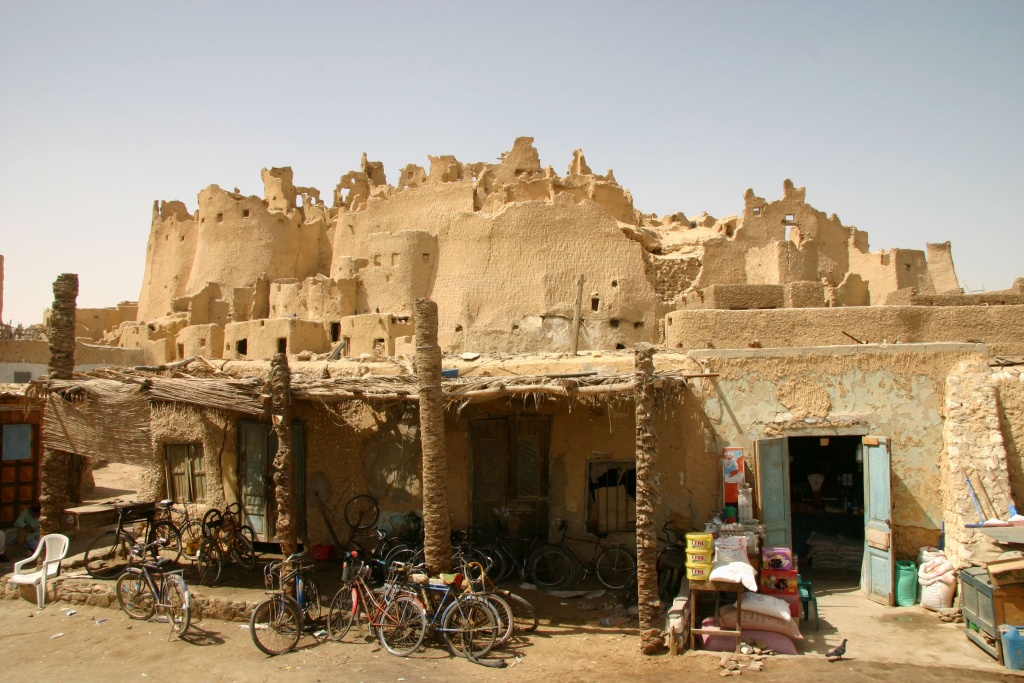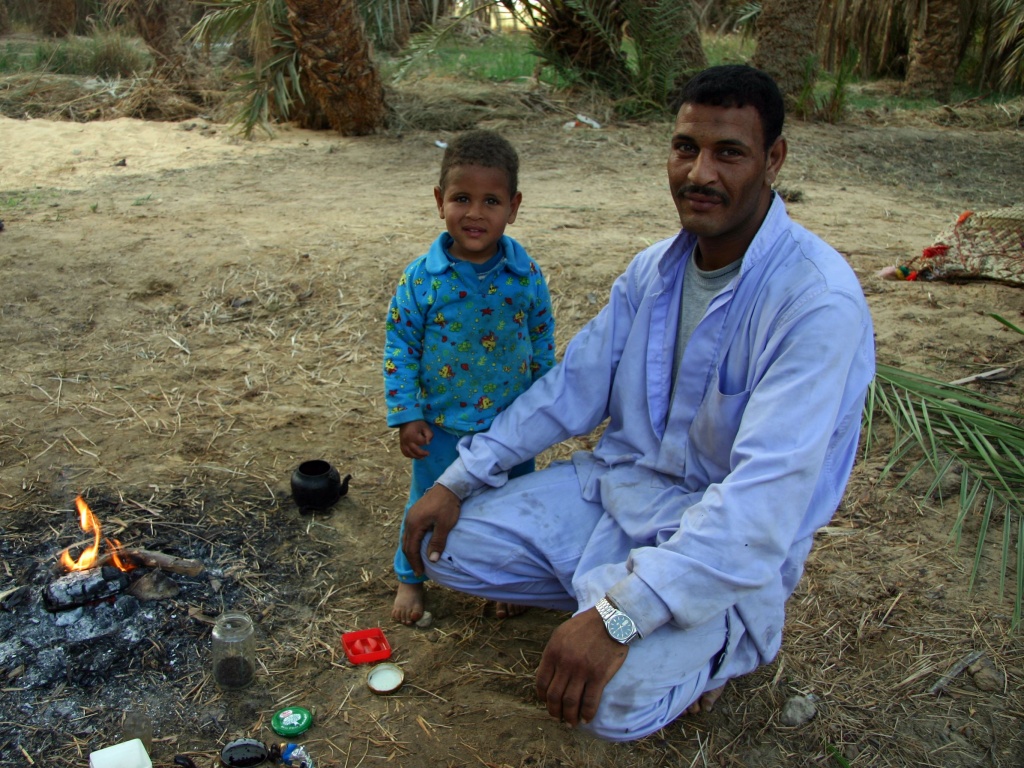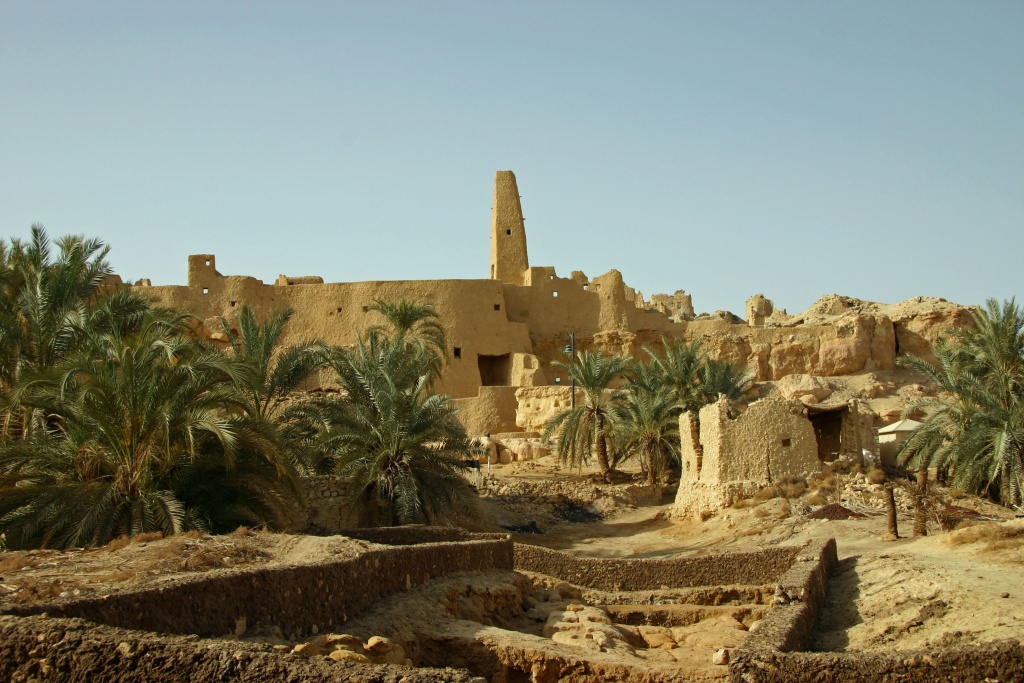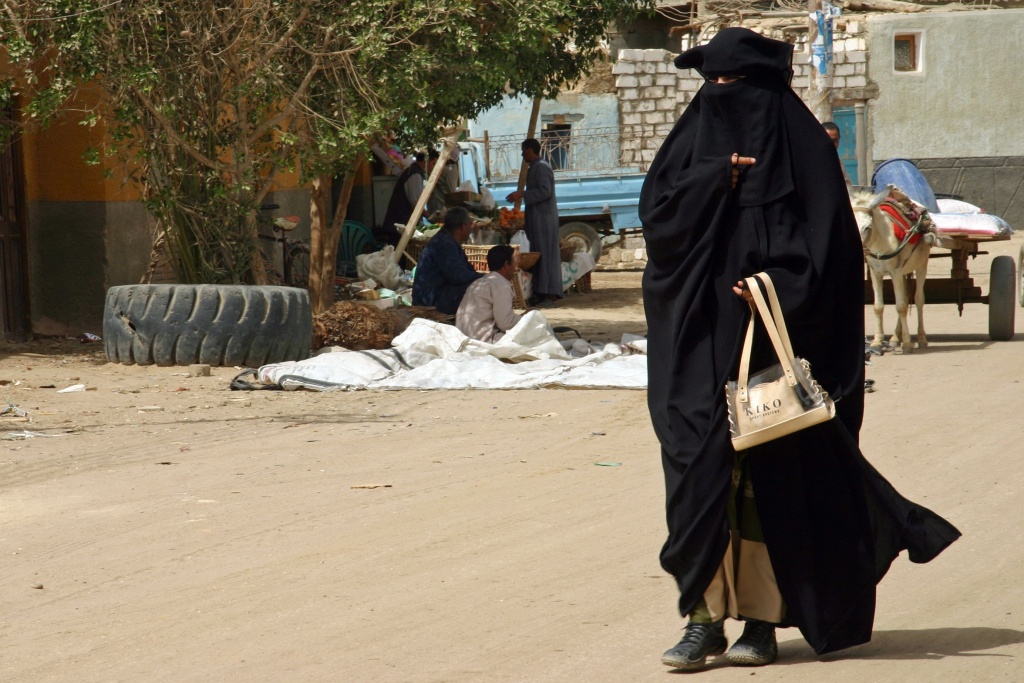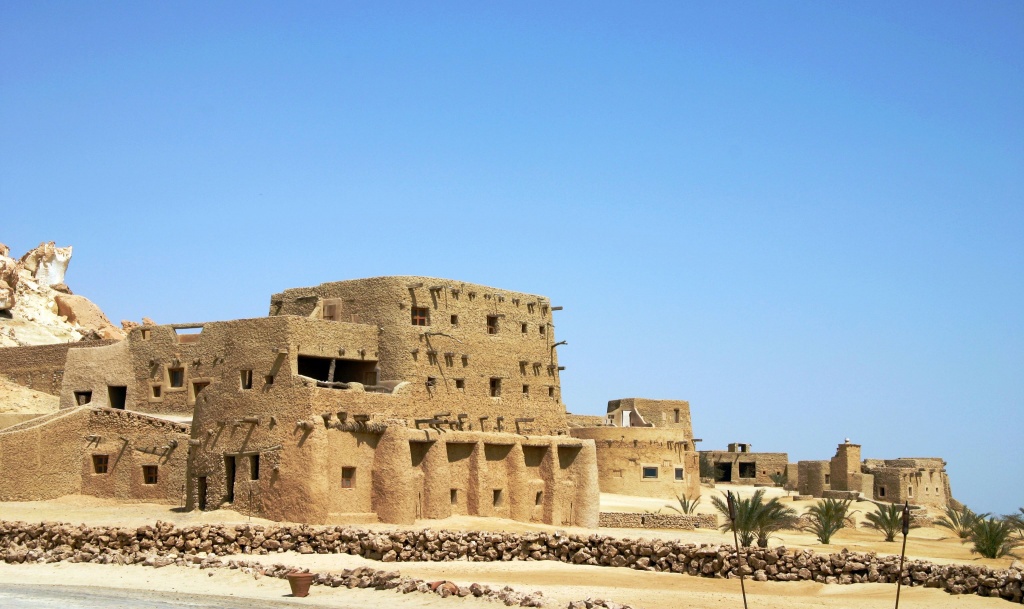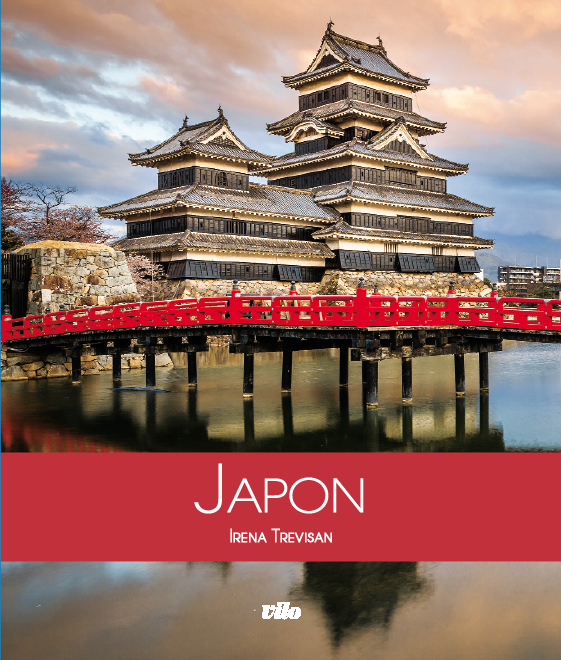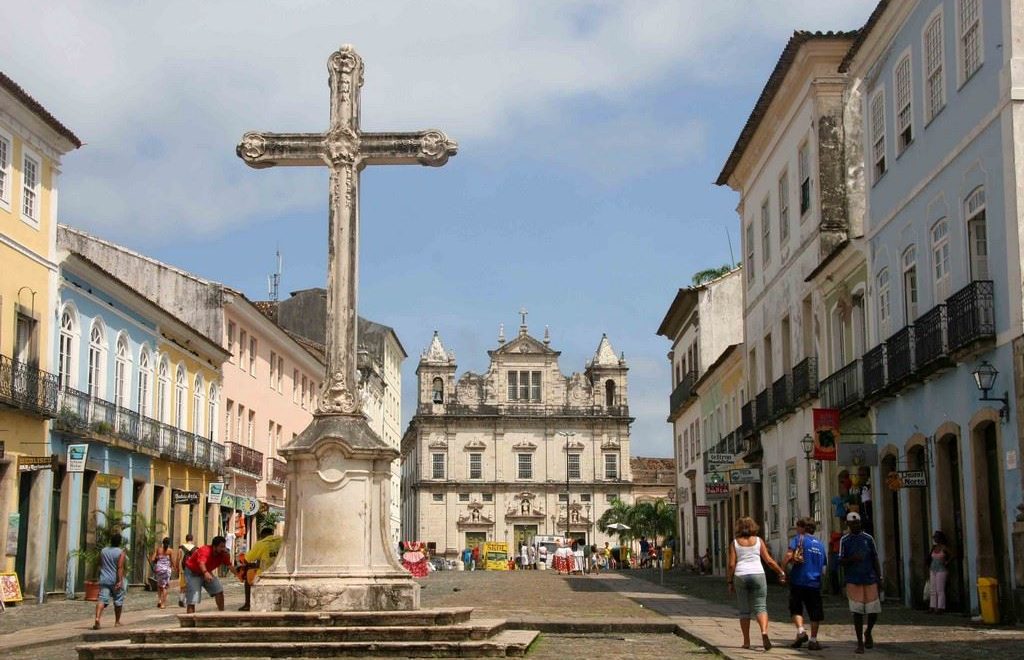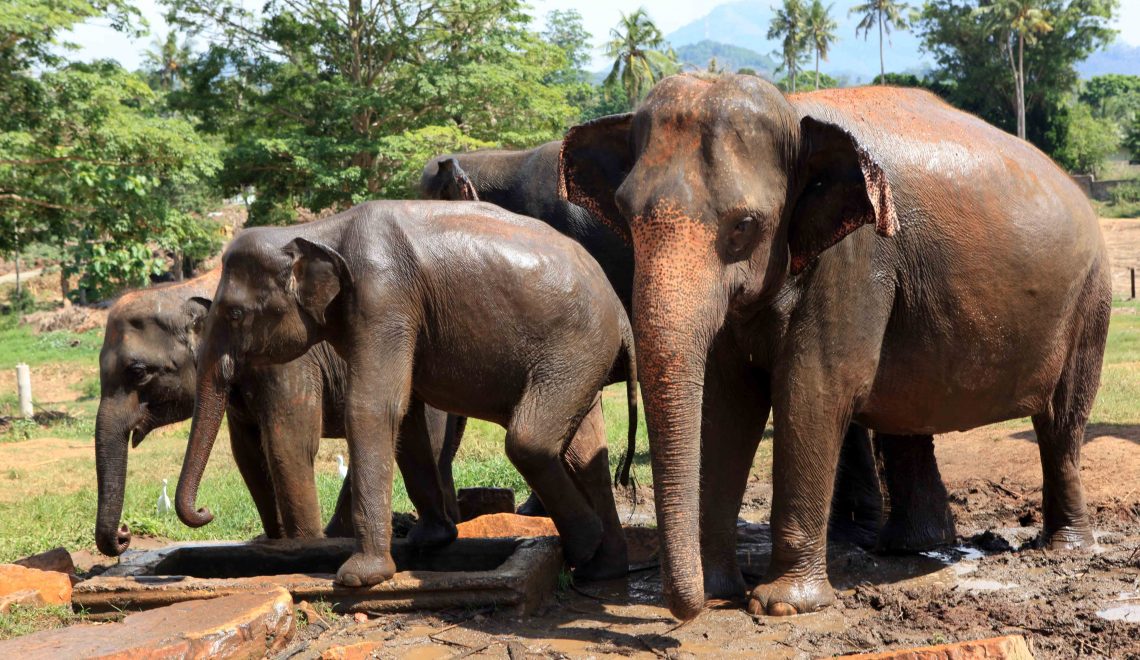
Famous throughout Egypt for its dates and springs, the oasis of Siwa is considered the idyllic island of the Great Sand Sea. Difficult to access until recent years, with little exposure to cross-fertilisation, Siwa was for a long time in another world. It is the first and last stop on the chain of oases that Herodotus called "the archipelago of the blessed".
Siwa is home to a Berber population renowned for its fierce resistance to Arab and foreign invaders. Although Siwa is gradually opening up, it has not yet let itself be taken in by the rare tourists. It tries to preserve an identity that is quite distinct from other oases and traditions from another age.
Siwa is not discovered by chance. 600 km from the Nile Valley, this beautiful and fierce Egyptian oasis takes a long time to discover. Wherever you come from, you have to swallow the dust of an irremediably flat and dreary desert, awakened here and there by a few stony piles of sand, perches for hungry crows. From Marsa Matruh on the Mediterranean coast, we head 350 km south-west on a tarmac road through the immense Libyan desert. From the Bahariya oasis, it's a long track under military control, where 7 checkpoints pull a sleeping civil servant from his camp bed or his game of dominoes.
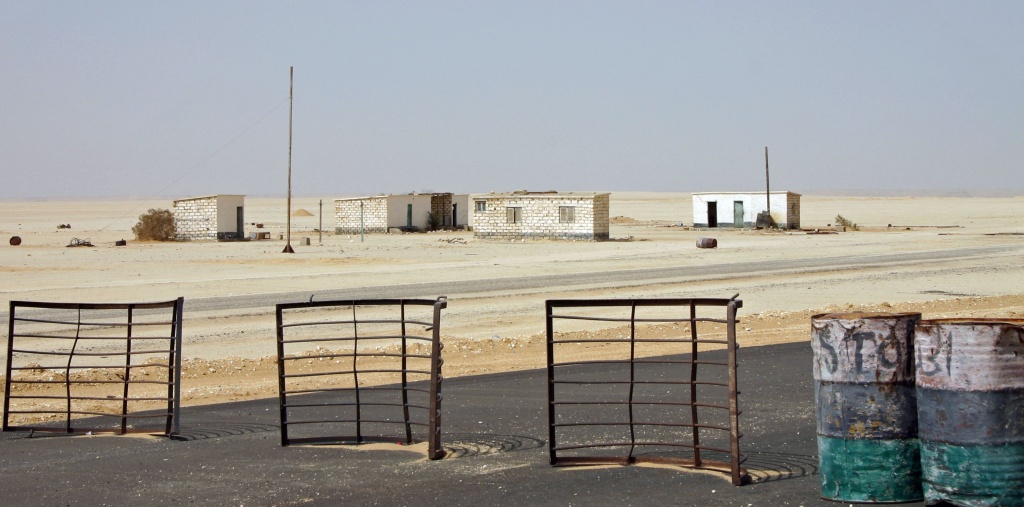
This is one of the many checkpoints in the Lybian desert: a few barriers and barrels on the road. It is forbidden to photograph the soldiers.
Then the palm grove comes into view, a green expanse surrounded by lakes of salt water with a silvery sheen, reminding us that this desert was covered by the waters of the Mediterranean millions of years ago. A strange site, dominated by the remains of Shali - the town in Berber - and Djebel el-Mawta, "the mountain of the dead" in Arabic.
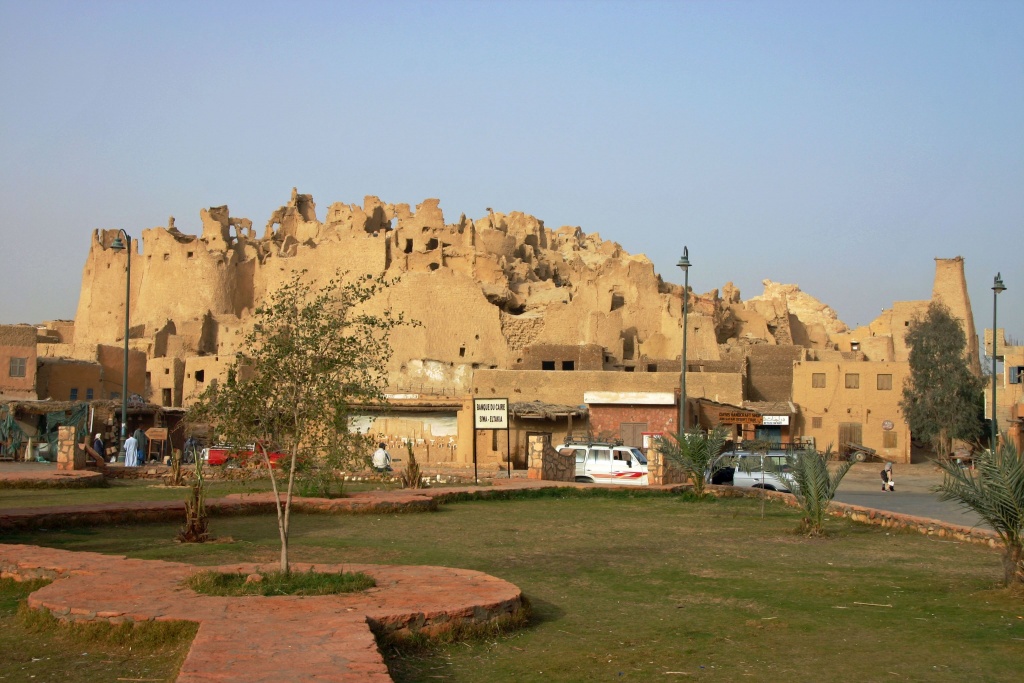
Ruins of the Shali citadel built of karshef, a local stone made from fossilised salt from the oasis lakes and mud.
This is Siwa, the most westerly of the Egyptian oases and the most easterly of the Berber communities to have ventured into these lands some 10,000 years ago. Erected at the very beginning of the twelfth century on the highest hill in Siwa, Shali was a fortress reputed to be impregnable that the Siwis had built to protect themselves from the warlike Arab tribes. Until the last century, its ramparts stood more than 10 metres high, behind which stood buildings 4 to 6 storeys high.
But it was very rare torrential rains, not invaders, that destroyed the town in 1928. Built from a mixture of sun-dried mud and salty concretions known as karshef, the houses collapsed one by one as the salt dissolved in the three days of rain. The site remains extraordinary, especially when lit up at night.
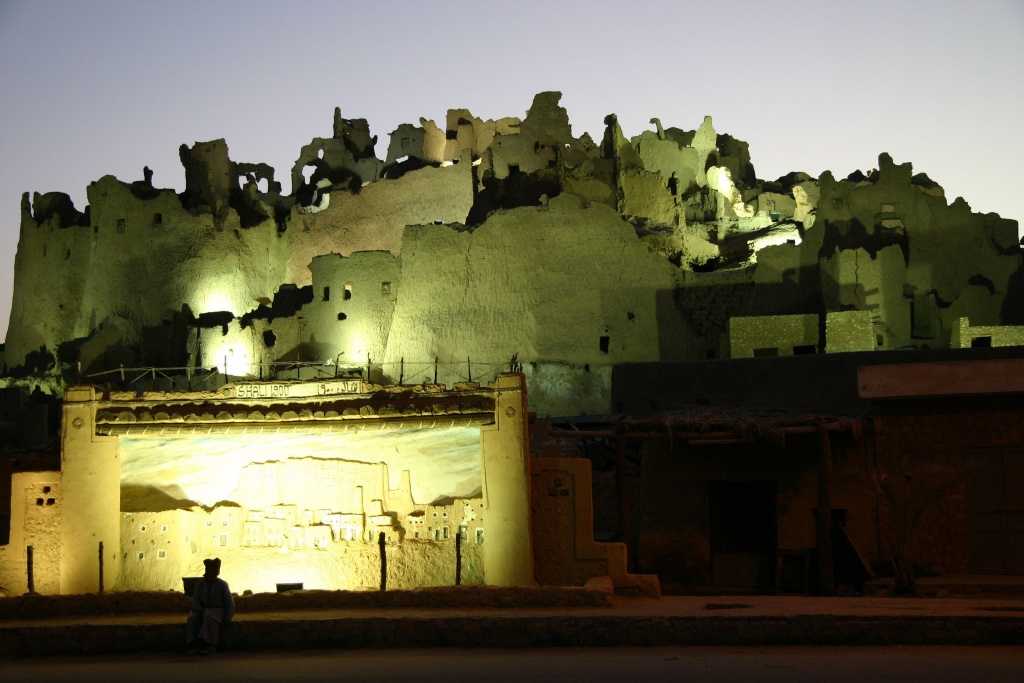
The ghostly ruins of the ancient city of Shali bear witness to an architecture on the verge of extinction.
The present-day town fades away in front of the citadel, all lacy dried mud, ochre or white, cut out against the sky. From the top of the hill, you can see the whole oasis and the salt lakes, but the view from the top of Djebel el-Mawta is nothing like it.
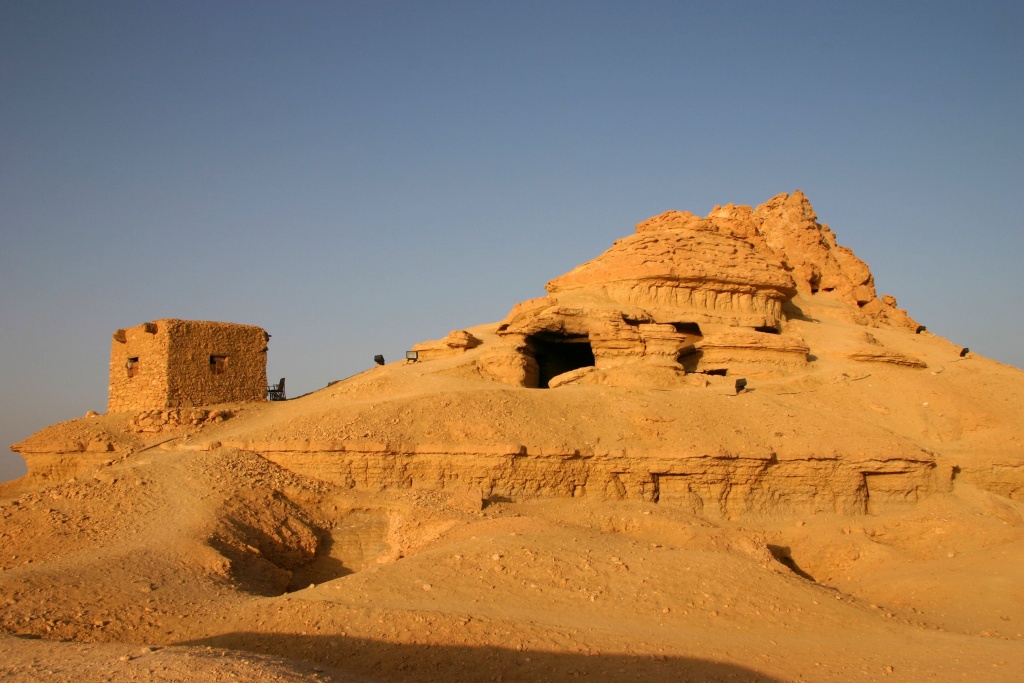
Gebel el-Mawta is home to several well-preserved tombs from the 26th dynasty and offers spectacular views over the Siwa oasis.
This vast promontory is dotted with hundreds of tombs dating from the 26th Dynasty and the Ptolemaic and Roman periods. Four of them can be visited, including that of Si-Amon, a wealthy oasis inhabitant of Greek origin; it is decorated with mythical scenes representing the Egyptian pantheon.
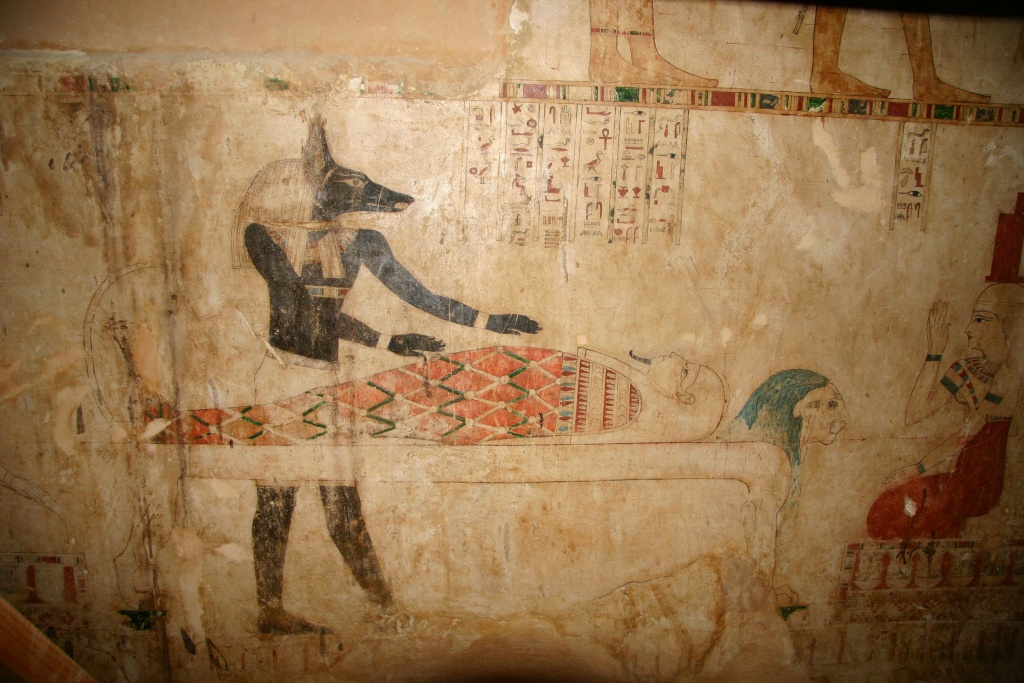
The jackal-headed god Anubis stands beside a mummy. He is the god of embalming and the protector of necropolises. Tomb from the XXVIth dynasty.
The Siwi never venture up the mountain after dark because they believe the place to be inhabited by spirits. However, these fears did not prevent them from using the tombs as shelters during the Italian bombardments in 1940.
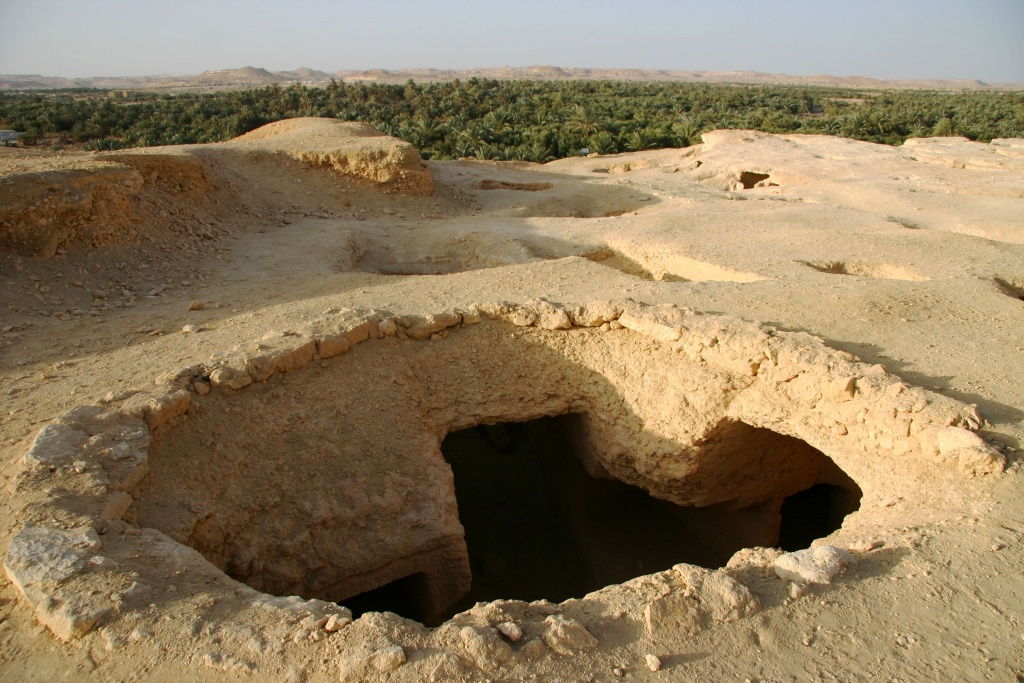
The tombs of Djebel el-Mawta are dug into the limestone cliff. Some have not yet been excavated, but many have been pillaged by the oases.
An island of life on the edge of the Great Sand Sea
In this vast depression 18 metres below sea level, almost 300 springs irrigate superb gardens planted with palm, olive, lemon and orange trees and provide a livelihood for around 30,000 people.
Some of these springs are renowned for their beauty or virtues, such as Cleopatra?s (Gubra) or Tamussi, where young girls come to bathe before their wedding night. Others are renowned for their purity, such as the Abou Shrouf spring, which produces 20,000 m3 of water a day and has a bottling plant. Although rainfall is very rare (the equivalent of 3 days in 25 years), water flows here in abundance. This has enabled the population to live self-sufficiently for centuries.
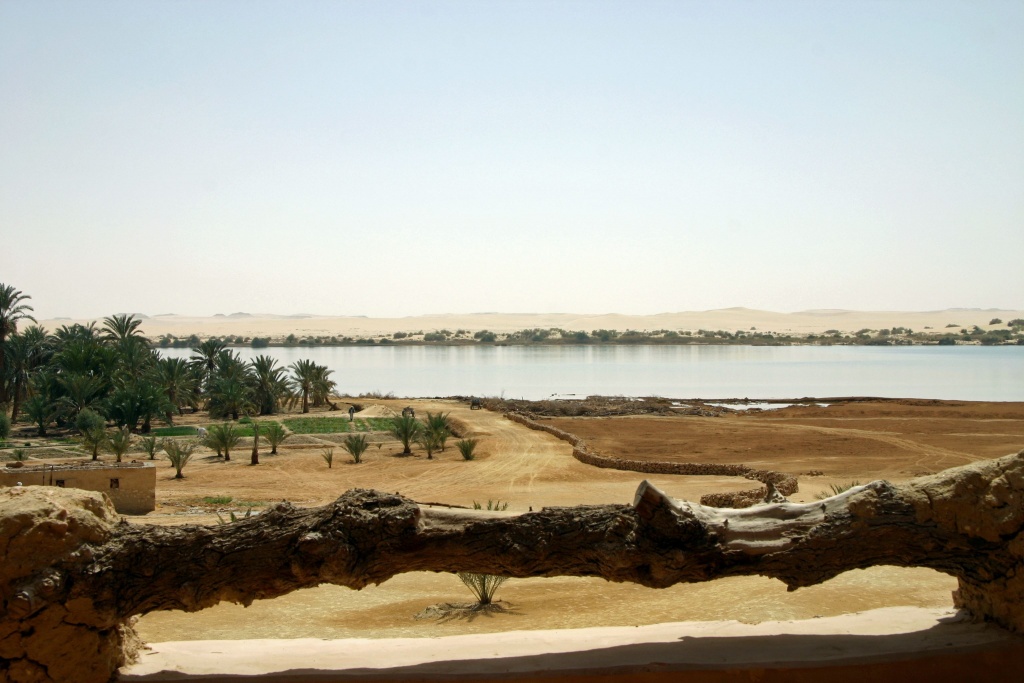
From the Adrere Amellal ecolodge, there is a beautiful view of the large lake and the palm grove. Unfortunately, groundwater is no longer sufficient and salt water from agricultural drainage is increasing, which has already caused the destruction of many palm trees.
Virtually isolated before the road was built and electricity installed in 1986, Siwa was nonetheless, in days gone by, an obligatory stopover for caravans linking the oases of the Libyan desert to the Mediterranean, and a destination for pilgrims who came to consult the oracle of Amun, the ram god likened to Amun the Egyptian and Zeus. Alexander the Great, for example, was "recognised" by the oracle in 331 BC as the son of the god on earth, and therefore the "legitimate" ruler of Egypt. The Greek historian Plutarch probably describes what actually happened during the visit of the Macedonian conqueror: "Some say that the prophet, wishing to greet him in Greek with a term of endearment, called him 'my son' (paid).Some claim that the prophet, wishing to greet him in Greek with a term of endearment, had called him 'my son' (paidion), but that, in his barbaric pronunciation, he stumbled over the last letter and said, substituting a sigma for the noun: 'son of Zeus' (paidios); they add that Alexander greatly appreciated this slip of the tongue and that the rumour also spread that he had been called 'son of Zeus' by the god." (Life of Alexander, XXVII, 9.) His temple still watches over the ruins of the ancient town of Aghourmi, the site of the first settlements in the oasis. And over a few families who earn their living from the neighbouring palm grove and the now rare tourism that is threatening this extraordinary cultural island.
Having remained isolated from the world for centuries, Siwa has managed to preserve an identity that is quite distinct from that of the other oases, both through its original Berber language, Tsiwit, which is little understood by Egyptians, and through its austere customs. And not always appreciated by foreign visitors. Alcohol is banned here, as a sign at the entrance to Shali, the largest village, reminds us, and female visitors are strongly advised not to wear shorts or bare arms. Even less so in a swimming costume! The only way to enjoy the freshness of the springs is to jump into the water fully clothed! In the cafés, which are mainly frequented by foreigners, it is surprising not to hear oriental music or the voice of Fairuz, so dear to the hearts of Egyptians everywhere else in the country! Music is forbidden here. Only Islamist preaching blared through nasal cassettes. Clearly, the Muslim Brotherhood is well established and has a major influence on local life?
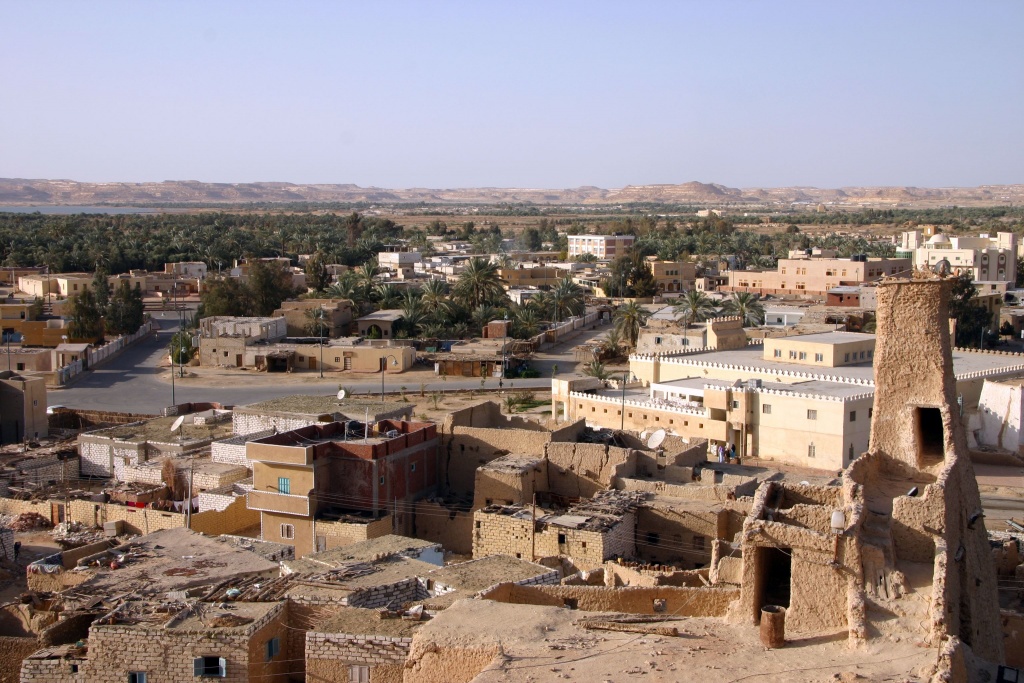
Modern Siwa has developed mainly in concrete around the old sentinel, which is slowly falling into disrepair.
Women: the ransom of a preserved tradition
This is not exactly a hopeful sign for Siwi women, who are already severely restricted by tradition. They are few and far between, both in the streets and in the fields. Stealthy ghosts covered in the traditional tarfottet, a bluish-grey cloth specially woven for them in Giza, which completely conceals their bodies and faces, they can sometimes be seen slipping between two stalls or huddled under their veils at the back of the carts that bring them in from the fields.
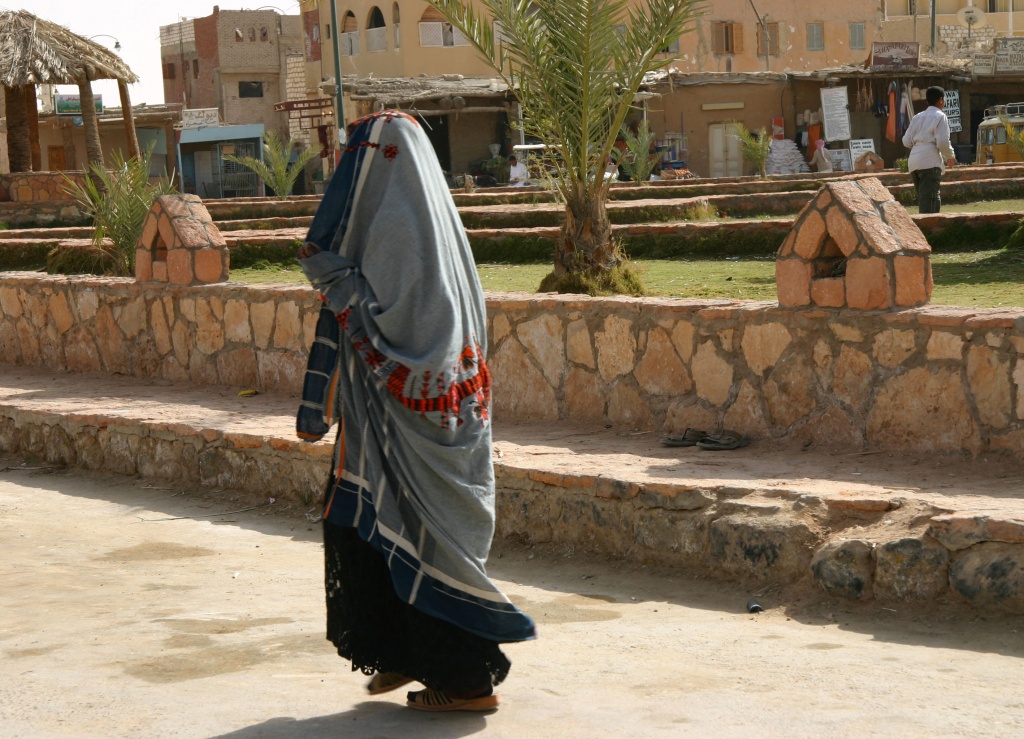
The Issiwane woman only leaves her home with her head and face covered by a veil, revealing only her eyes.
Married between the ages of 13 and 15 to a man 15 to 20 years older than her, a Siwi woman leads the life of an eternal captive. With a mother-in-law who can chase her away from one day to the next without her husband's permission (a son never opposes his parents), an all-powerful husband to whom she owes obedience and a neighbourhood that watches her every move. As a result, Siwa has the highest divorce rate in Egypt. "The cause is to be found mainly in the relationship between the wife and her mother-in-law", explains Fathi Malim, a young Siwi sociologist who has commented on the customs and traditions of the oasis in a book. "The hold of the mother-in-law is such that when she wants to break up her son?s marriage, all she has to do is tell her daughter-in-law that she is divorced. The husband has no way of reversing this decision, except to choose to go away with his wife or stay with his mother. In practice, he chooses his mother, and the wife to return to her father?s house or that of one of her brothers if he is deceased. But since the arrival of television and the internet in the oasis, young women are beginning to take a different view of life in general and love in particular. Some young girls are taking the liberty of contradicting their fiancé," said Fathi Malim in 2006. Until now, that was unthinkable! What if they wanted to choose their husband?
How do I get to Siwa?
Access is by bus (West Delta Bus Company) from Alexandria or Cairo via Marsa Matrouh, by shared taxis or by 4 x 4 for those taking the services of a guide or an excursion.
There are currently no French tour operators organising trips to Siwa. However, there are a number of Egyptian tour operators offering low prices.
Advice to travellers in Egypt: the French Ministry of the Interior is currently formally advising against all travel from the Egyptian-Libyan border to the Egyptian-Sudanese border.
Accommodation
In the town, we recommend the Shali Lodge, a small hotel built in mud brick.
A few kilometres from Siwa, Hotel Adrere Amellal is a superb ecolodge, the antithesis of traditional luxury. Built on the slopes of a white limestone mountain, it has 40 rooms with simple, chic decor and views of the White Mountain, Lake Ghâry, palm groves and the great sandy sea. The furniture and sofas are made of earth and covered with white cushions, and the food is prepared using organic vegetables grown in the hotel garden. The hotel also boasts a spa and spring-water swimming pool. http://adrereamellal.net/siwa%20oasis.html
Text and photos: Brigitte Postel

